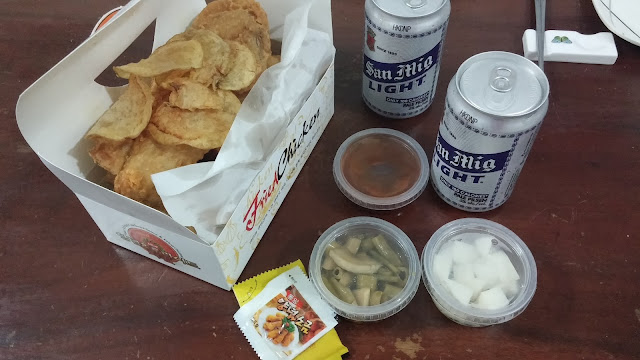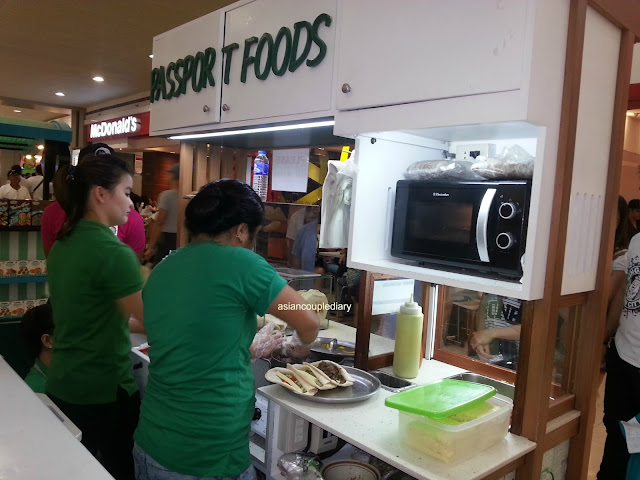김포 전등사 GIMPO (JEONDEUNGSA TEMPLE)
We can't do anything today so hubby decided to went outside, the weather also is not that cold. We went here in Jeondeungsa Temple located in Gimpo, South Korea. Most of the temples here in Korea are free you can visit any time but in this temple we pay 2000 won ($2) for the parking and 3000 won ($3) entrance for temple which is not bad because the temple's are clean and well take care off. But in my experienced going to the temple this is my first time paying for it. ^_^
From the parking lot we went up and walk for about five minutes and then we so this restaurants before the temple entrance. We went here week days so few people came but I guess when it's week end there's a lot of people coming here because there's so many restaurants.
It is not obvious when this casle was built, but according to the records Goryeo History, it is Samnang the founding father of Korea, Dangun has his three sons make this castle and named it Samrangseong Castle. It is also called Jeongjok maountain fortress wall. At the start, it was built with a sort of mud, and broken stones were laid on it again. This style is followed the forification of the period of three kingdoms. Facilities of this castle were the Nammanru (the south gate tower), the Dongmun (the east gate tower), the Seomun (the west gate tower), and the Bukmun (the north gate tower) and 13 wells in castle. There is Jeondeungsa Temple in this castle. The government also built achives here for the preservation of the royal chronicles, and established a temporary palace in this castle. In the middle of the Joseon dynasty, the 'Seonwonbogak' was built. In 1866, general Yang Heon-su defeated the French naval invaders. The south gate, Jonghae-ru, was restored to its original condition in 1976.
They also have program called TEMPLE STAY where you can be able to stay here for how many days and experience the life inside the temple. But I guess you need to pay for that, I'm not sure how much. You can search information about that, If your planning to visit here in Korea or even you're living inside Korea and want to experience it.
This is medicinal water come directly from the mountain.
JEONDEUNGASA DAEUNGJEON
Rebuilt in the 13th year (1621) of the king Gwanghaegun's rule over the Joseon Dynasty, this wooden building is three kan (a traditional architectural measurement, meaning the distance between two columns) at the front and back and three kan at the sides. The building has finally carved multi-tier wooden ornaments on the top of each column as well as between columns. All columns show entasis look, and the four corner columns have carvings of naked women at the apex. Legend says that her from the sin, after his lover run away from him during the construction work. Three Buddhas are enshrined in the hall, which features a lavishly decorated ceiling with bright colors and sculpture of animals and flowers such as dragons, phoenixes and lotus blossoms. The alter and the canopy over it are also exuberantly decorated.
JEONDEUNGASA YAKSAJEON
Yaksajeon is a temple hall where the Medicine Buddha is enshrined. According to the historical record. Records of the Renovation of Dae Ungjeon and Yaksajeon Halls, this building had new roof tiles in the 13th year (1876) of King Gojong's rule of jeseon. While there is no record that mentions its exact date of construction, a similar architectural style to the temple's main service hall suggests that it was built during the mid-Jeseon era. It is of three kan (a traditional architectural measurement, meaning the distance between two columns) at the front and back and two kan at the sides with hipped-and-gabied roof. The cross-hatched ceiling is decorated with patterns lotus blossoms and vines.
JEONGJOKSAN ARCHIVES SITE IN GANGHWA 강화 정족산사고지
This is the site of the Jangsagak Archives which contained Joseonwangjosillok. The Annals of the Joseon Dynasty. Next to it was the Seonwonbogak Archives which kept the royal family's genealogy. The Joseon Kingdom stored Joseonwang -josillok the Annals of the Joseon Dynasty in four places including Chunchugwan, Chungju, Seongju and Jeonju. During the Japanese Invasion of Korea, only the Annals in Jeonju survied, which was then moved to the Myohyangsan Archives, and later to Manisan Archives. In 1660 it was moved here and the Seonwonbogak Archives was built on the right side to keep the royal family's genealogy. The archives seem to have been destroyed after 1931 because there are pictures of it in a illustrated book of historic remains of Korea published in 1931. The annals of the Joseon Dynasty were moved to Seoul in 1910 after Korea was colonialized by Japan. Now they are kept in the Kyujanggak of Seoul National University. The archives were rebuilt in 1998 and their old sign boards named Jangsagak and Seonwonbogak were also resotored in their original place.
After walking around we stop by drink coffee and eat snacks which makes me happy. And then went back home. That's all for now see you next blog post. Have a wonderful day every one. ^_^
VIDEO




























Comments
Post a Comment
GOOD DAY MATE! ^_^